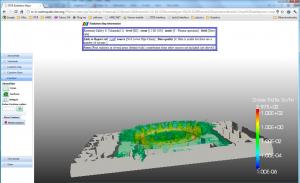Royalties for intellectual property: a big first for ITER!
22 Apr 2013
-
Michael Loughlin, Nuclear Shielding & Analysis Coordinator and Anna Tyler, Assistant Legal Advisor
With support from AMEC, a UK-based company, the ITER Organization has developed software that allows a web-based program to display data on radiation calculations throughout the ITER facilities.
The technological demonstration of nuclear fusion as a power source may be a couple of decades away but we don't have to wait till then to start reaping the benefits of research at ITER. Like all journeys of discovery we will meet unexpected obstacles and discover wondrous new sights, but sometimes it is the obstacles that provide the greatest reward when, by overcoming them, new techniques are born and intellectual property is generated.
For the first time, the ITER Organization has licensed intellectual property to a third party against royalties, in compliance with the ITER Agreement and its Annex on Information and Intellectual Property. ITER's Legal Affairs contributed to the drafting of the agreement.
With support from AMEC, a UK-based company, the ITER Organization has developed software that allows a web-based program to display data on radiation calculations throughout the ITER facilities. Due to the potential applications of this software for technological areas outside of ITER and/or fusion research and development, a private company from one of the ITER Members has requested a license in order to commercially exploit this software.
Based on the principles of the ITER Agreement and its Annex on Information and Intellectual Property, the company was granted a non-exclusive, non-transferable, worldwide license to access, use and sub-license the software, software package and source code or any substantial part of it. For their part, the Domestic Agencies will be entitled to a licence by the ITER Organization, as is foreseen in the Annex on Information and Intellectual Property of the ITER Agreement.
Nuclear fusion produces radiation in the form of neutrons and gamma rays. The fusion machine is therefore designed to withstand this radiation and the buildings to shield the workers and the public. For the engineers designing the disparate components that make up the ITER machine, it is necessary to know the radiation levels that their particular system is likely to encounter.
This calculation is done by running massive computer simulations of how radiation travels through the complex geometry of pipes, walls, floors, doors and staircases of the ITER complex. Radiation maps result—something like electronic atlases showing what the radiation levels will be in every room for different operating states of ITER and during cask transfer.
How do you create an atlas accessible to anyone who needs it, easy enough to interpret, and containing all the information they need?
For this, you need a database capable of holding millions of 3D maps, a way to display them, and access through the intranet. This might sound easy enough but this was one of those occasions where unforeseen problems were encountered. The ITER Organization successfully developed a specially designed computer application to link the various tools and provide a communication protocol between them.



